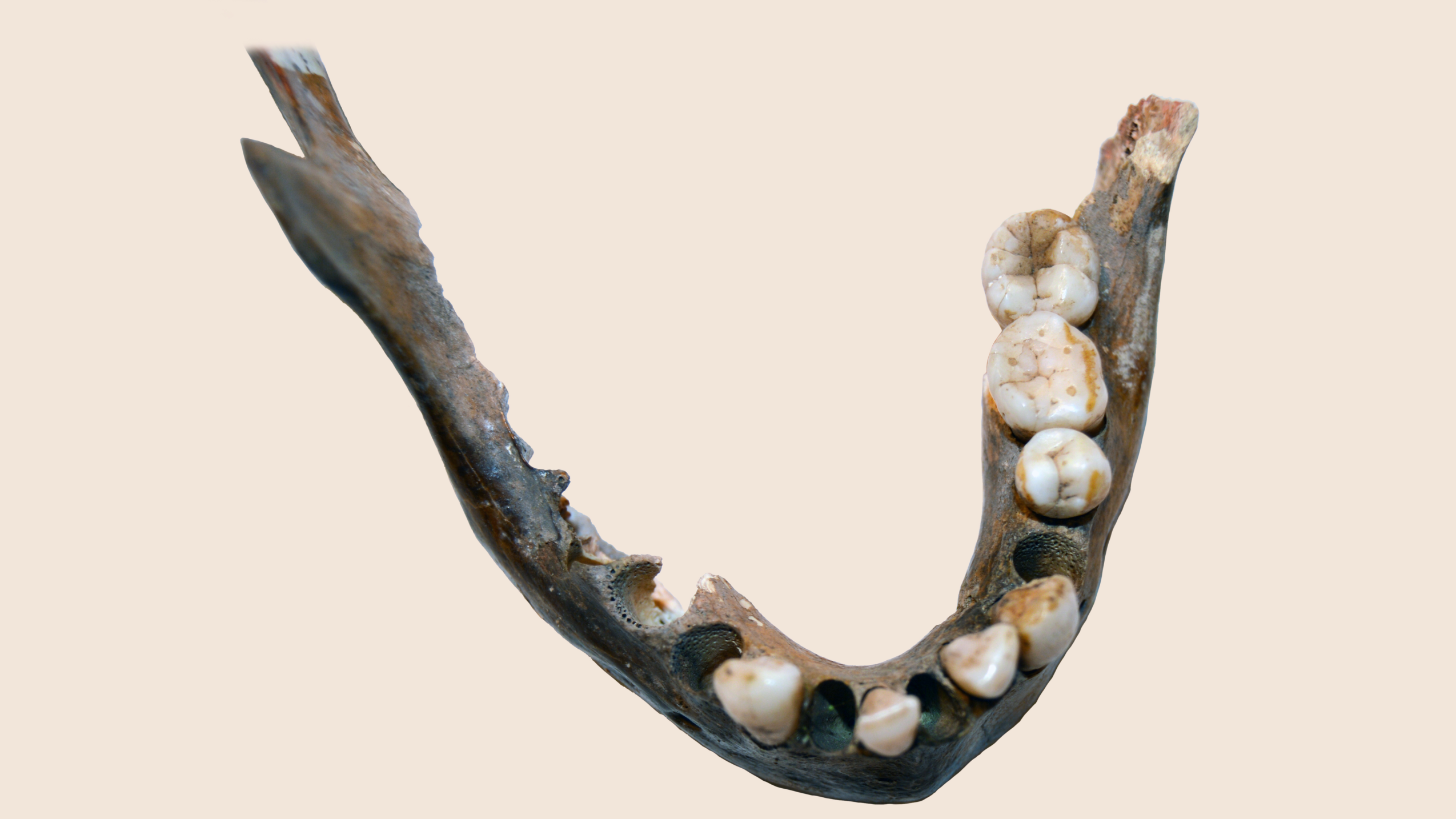Blue-eyed 'Ice Prince' toddler was buried with a sword and a piglet 1,350 years ago in Bavaria
The "Ice Prince" burial sheds light on a toddler from a wealthy family who lived around 1,350 years ago in Bavaria, Germany.
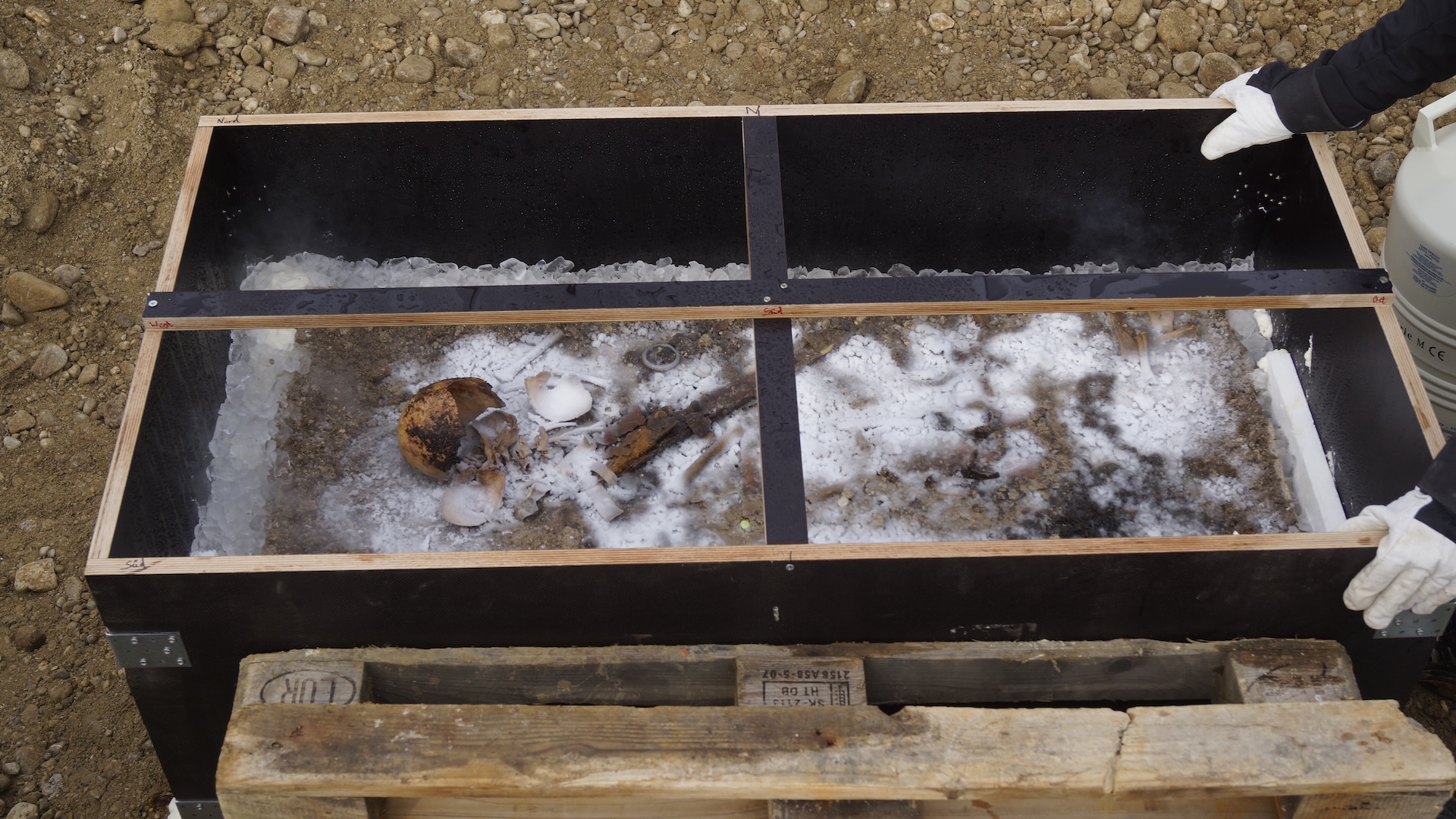
A blue-eyed boy buried in southern Germany more than 1,300 years ago was interred with rare riches — including a small sword, silk clothes and a gold cross — indicating that he came from a wealthy local family before he died of an infection at about 18 months old, a new analysis finds.
The remains of the child, dubbed the "Ice Prince" because archaeologists flash froze the burial chamber to excavate its contents in a single block, were discovered in 2021 near the town of Mattsies in Bavaria.
The child's tomb was found south of the Upper Germanic Limes that once defined the Roman frontier. But the Western Roman Empire was extinguished in this area when Germanic tribes invaded in the early fifth century — centuries before the boy died in the seventh century.
The latest research includes anatomical studies that estimated the boy was about 1.5 years old when he died, and radiocarbon dating that indicates he died between A.D. 670 and 680. A strontium isotope analysis of the enamel on his teeth indicated he was born in the region and had fed mainly on breast milk. Analysis of his DNA suggested the boy had blue eyes and light-colored hair. The studies also indicated that he had died from "chronic infection" caused by a middle-ear infection.
The boy was buried in leather clothes and with a small sword on a richly decorated belt. Other details of the well-furnished grave and the rare remnants of a silk garment — a sign of wealth — indicated that the boy came from a locally important family, archaeologists for the German state of Bavaria said in a translated statement.
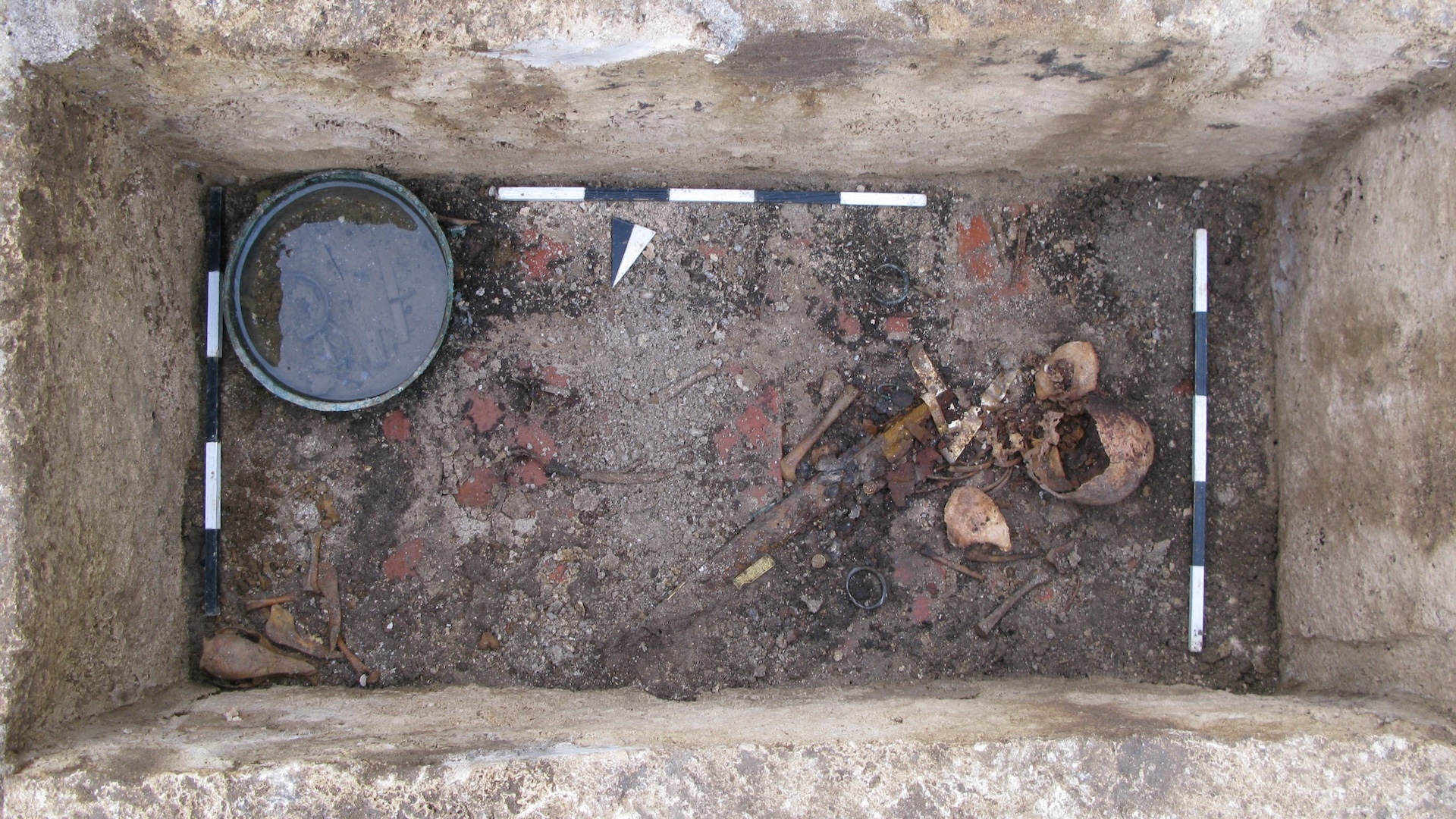
"Ice Prince"
The toddler's stone burial chamber was discovered amid the remains of a Roman-age villa near Mattsies during excavations for new buildings, according to the translation of a 2021 statement. Archaeologists said the villa seemed to have been repurposed as a burial place for the child, perhaps in line with the concerns of his family.
Get the world’s most fascinating discoveries delivered straight to your inbox.
"The boy's death must have shocked his regionally important family," the statement said. "They apparently made great efforts to give the child a burial in keeping with his social status."
The stone ceiling and walls of the burial chamber were tightly sealed against sediment, so the entire burial was in "excellent condition," the statement said.
State government archaeologists decided to flash freeze the contents of the entire burial chamber using liquid nitrogen so it could be excavated as a single block over 14 hours. The researchers used liquid nitrogen because its temperature of minus 320 degrees Fahrenheit (minus 196 degrees Celsius) prevents freezing water from creating large and destructive ice crystals, the statement said.
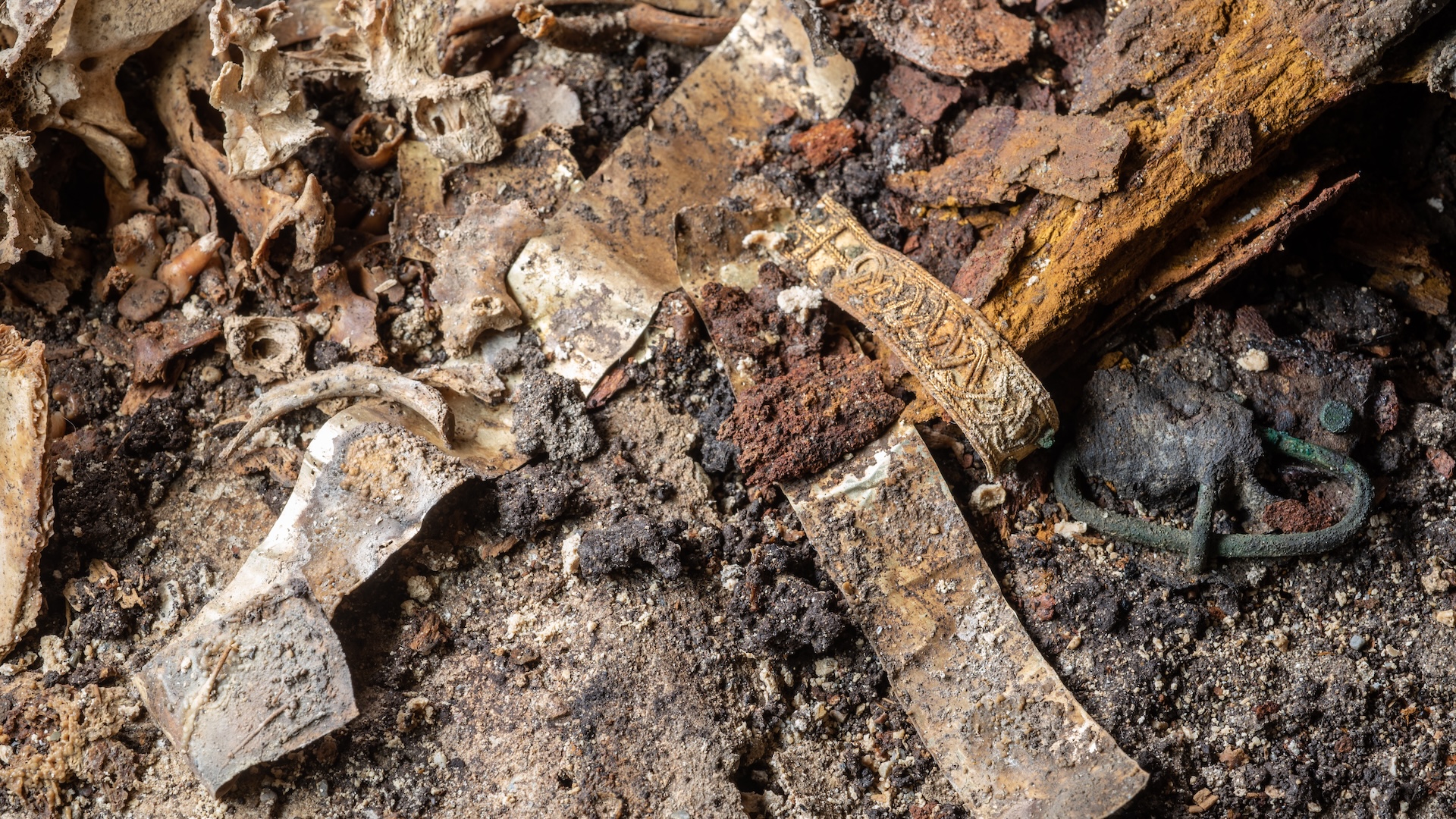
The boy was about 18 months old when he died, but he was buried with a small sword and scabbard on a richly-decorated belt.
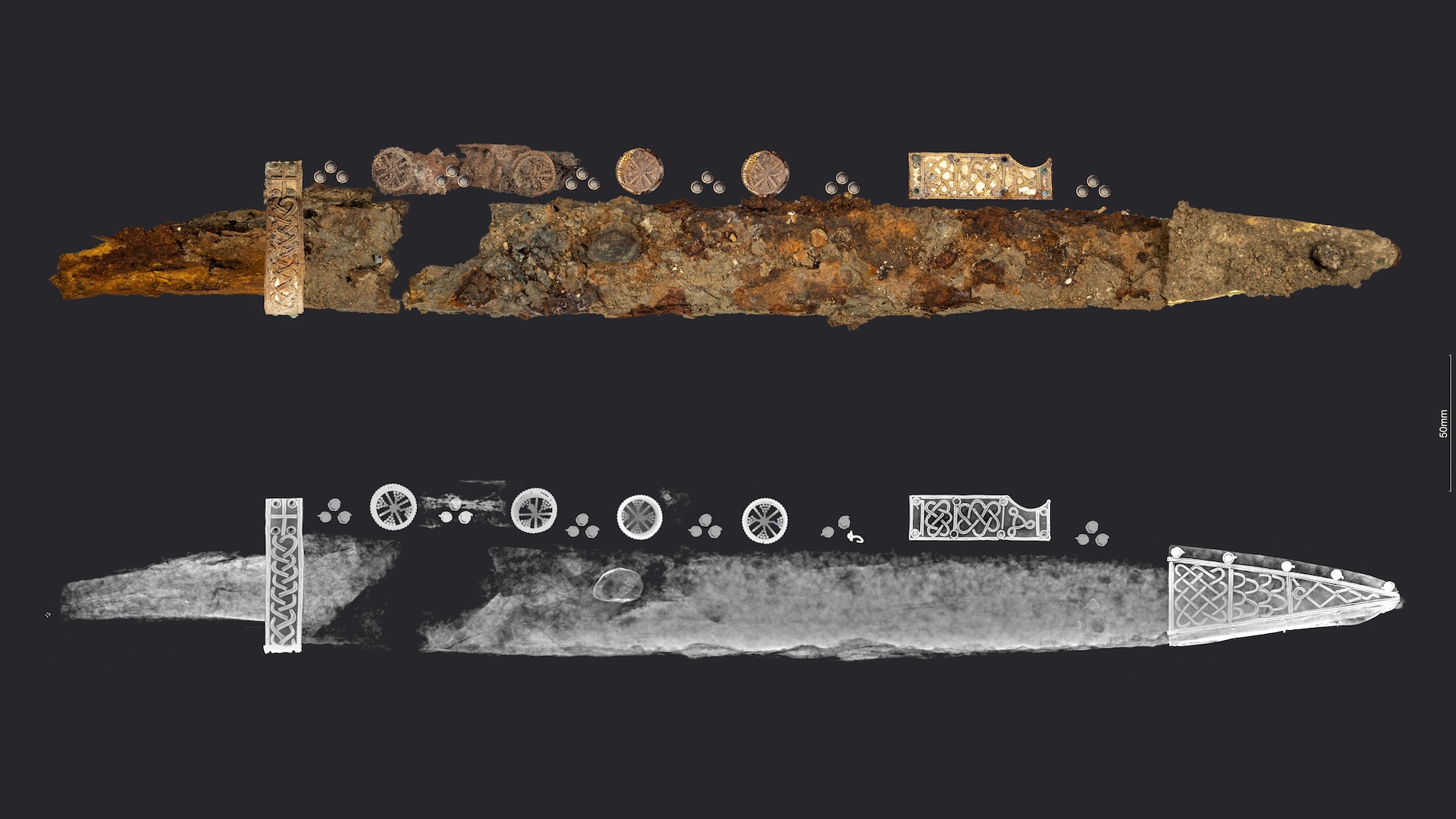
The latest studies have revealed new details of the sword, scabbard and belt buried with the young boy.
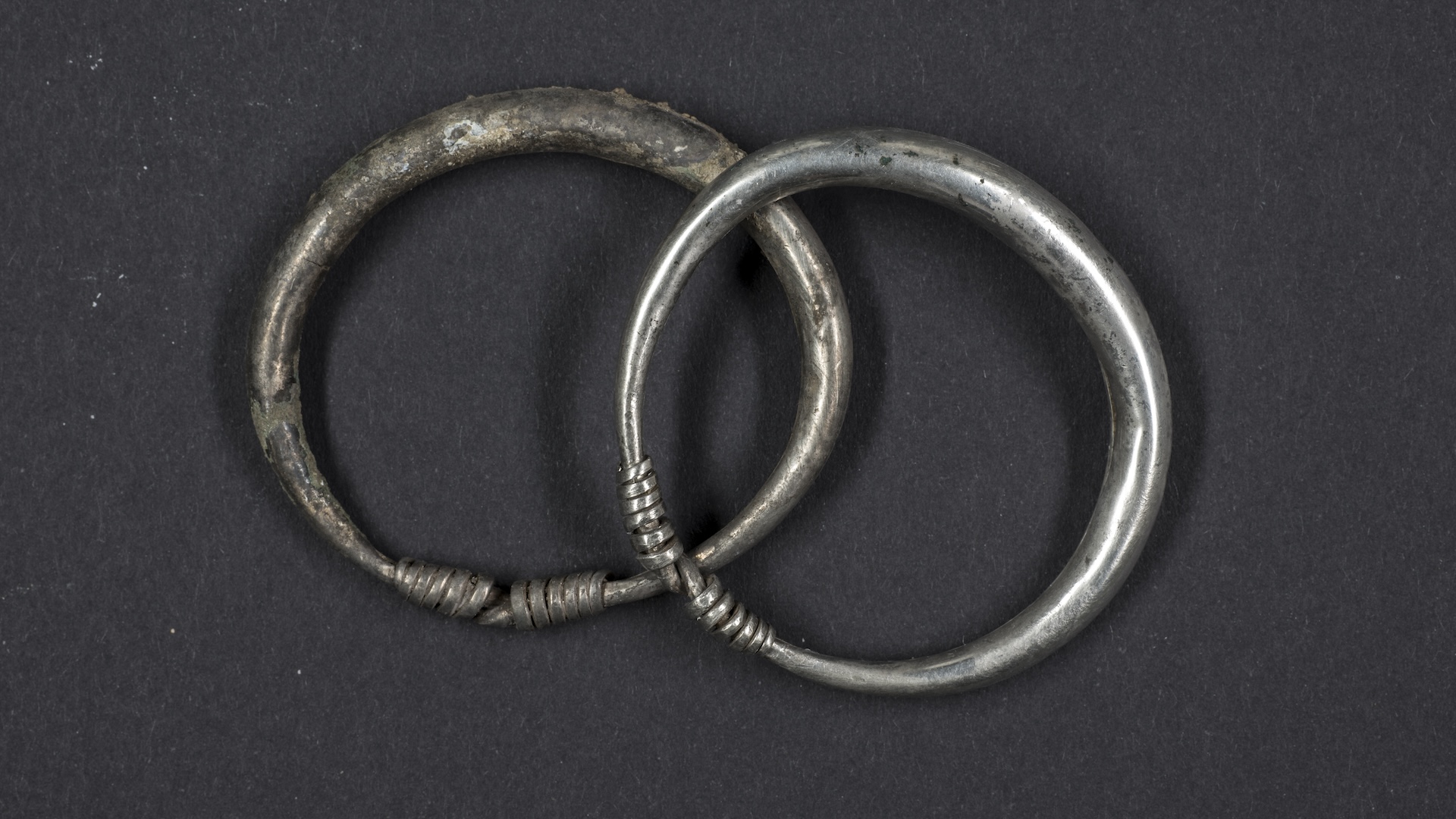
The "Ice Prince" was buried wearing silver bracelets and had silver spurs attached to his shoes.
Rich grave
The latest studies reveal that the body was laid on a fur blanket within the chamber and that one of the boy's garments was a long-sleeved shirt made from linen and trimmed with strips of silk. At that time, silk was available only through the Byzantine Empire, and it was a rare status symbol. The fabrics' exceptional preservation due to the tightly sealed grave makes them an even more exceptional find, the researchers said.
The boy was buried with silver bracelets on his arms and silver spurs attached to his shoes, according to the statement. Nowadays, most toddlers start walking at between 8 and 18 months of age, so it's possible this toddler had started walking before his death.
The burial chamber also contained a cloth decorated with a cross made from thin strips of gold, which may indicate early Christian beliefs; Bavaria didn't become fully Christianized until after Charlemagne conquered it in the eighth century. In addition, several grave goods — including a bronze basin, a comb, a wooden bowl and a drinking cup with silver fittings — had been placed on a woven mat at the foot of the body.
The archaeologists also found the remains of hazelnuts, apples and a pear, which were presumably whole when they were placed in the burial chamber. What were once thought to be the bones of a dog have now been identified as the dismembered remains of a piglet, which may have been cooked and placed as a food offering.
The investigations have also shown that the building where the Ice Prince was found was renovated twice in the years after the burial, which indicated that the site was used over a long period as a place of remembrance of the dead, the statement said.
Tom Metcalfe is a freelance journalist and regular Live Science contributor who is based in London in the United Kingdom. Tom writes mainly about science, space, archaeology, the Earth and the oceans. He has also written for the BBC, NBC News, National Geographic, Scientific American, Air & Space, and many others.
You must confirm your public display name before commenting
Please logout and then login again, you will then be prompted to enter your display name.
